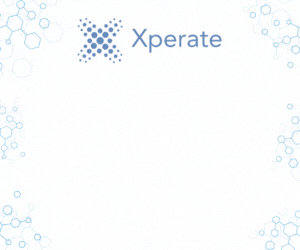Once upon a time, there was a law firm that decided to implement a new (and expensive) practice management system. The new system was fantastic! The finance team loved it, “The finance team loved the price, IT couldn’t wait to deep-six the inefficient spreadsheet-driven processes, and management was excited for new data and business insights that the application promised to provide.
But the attorneys weren’t using it.
There were too many clicks. A click to open the application, three clicks to get to the billing workflow screen, more clicks to find the needed information, click, click, click…
It was much easier for the attorneys to simply send a quick message to the legal secretary or support staff and have them do the needed inputting, research, report generation, etc. The attorneys had other things to do, like practicing law.
And so, the attorneys didn’t use the new application, defaulting instead to their tried-and-true habits even though it was inefficient, outdated, and slow.
If this story sounds familiar, you’re not alone. We see this scenario play out time and again at law firms of all sizes. And yet, until recently, no one’s developed a solution.
We’ve changed that.
Changing the narrative
The above scene is a real interaction our executive director, Bim Dave, experienced in 2015. As a technology professional dedicated to helping law firms optimise their tech, it left him asking questions and pondering solutions.
Bim recognised that the need to constantly switch back and forth between law firms’ core technology platforms was a cumbersome, multi-click process attorneys didn’t have the time, patience, or desire to lumber through. Their aversion had significant repercussions on productivity, ROI, and, at the end of the day, the firm’s bottom line.
The solution revolves around the user experience. Bim says,
“I realised the solution needed to be as simple and easy as sending an email or text. It needed to understand what was being asked for and be capable of making it happen without any further input from the user.”
He set out to create a solution.
Bim knew success hinged on the user experience. He and the Helm360 team focused on bringing law firms’ best-of-breed systems (timekeeping, document management, financial, HR, etc.) together in a user-friendly interface embedded into the everyday productivity toolset.
The result is Termi, a multi-dimensional solution that makes it easy for every person in the firm to interact with application data. From broad, generalised views to granular, deep dives, Termi makes using business intelligence data and turning it into action, as simple and easy as sending an email.
What Termi does: The basics
What do we mean by “a multi-dimensional solution”? Let’s break that down.
Termi has two primary components: an interactive dashboard and Termi-bot, a chatbot with embedded artificial intelligence. These components can be used alone or in tandem depending on a user’s task and role.
For instance, a managing partner or firm administrator may use the Termi drag-and-drop dashboard to generate key reports. In minutes, a customised report can be created, saved, shared, modified, or exported. Click on a detail (name, date, matter) for granular information or a broader view. No waiting, no collating information from disparate applications, no delegating to support staff, no lag in updates. The information is immediate, up to date, and in real time.
An attorney is more likely to use the Termi-bot component. This AI chatbot integrates with MS Outlook and other productivity applications to create an intuitive, interactive way for lawyers to get immediate responses to questions asked in normal, everyday English, like:
- What is client X’s current bill?
- Is there a conflict with this new work?
- Have I entered my time for this case?
- What is this month’s WIP?
Termi-bot delivers the answer in seconds.
The attorney can edit, update, save, and share the results in real time. Termi-bot’s customisable language library allows the bot to “learn” from interactions to continually increase its responsiveness and efficiency.
It also connects to the user’s calendar, automatically sending reminders for appointments, phone calls, meetings, billing dates, time entry, and any other notices that have been customised for a firm.
And, in true app fashion, Termi-bot is mobile and device-friendly. This business-of-law work can be done in a cab, at the courthouse, in a home office, at the airport… wherever the user is on their preferred device (phone, tablet, computer, etc.). No more having to wait until you’re back in the office to update the WIP or adjust billing statements.
Advanced Termi: Stepping beyond the obvious
Termi began as a response to a real-life user problem. Its development continues to be spurred by user feedback and requests.
Bim says,
“Whenever we get a new problem to solve with Termi, we ask ourselves: How do we design this user experience in the most efficient way? Whether it’s performing a conflict search, creating data, or creating a new matter directly within Termi, how do we do this in a way that doesn’t involve multiple clicks? It needs to be as simple as asking the system to do the clicking, with minimal input from the user.”
Thus far, this mindset has made Termi more responsive, more secure, and better able to allow users to:
- Create customised flows
- Export information to Excel
- Tailor Termi’s language library
- Pull data from other applications like Intapp, DocuServe, etc.
However, it’s not enough to improve Termi’s capabilities. We’re also constantly on the lookout for new ways to apply the technology.
Onboarding new employees is an example. Termi’s ability to source information from disparate systems makes it an effective tool for streamlining this process, especially with distributed workforces becoming the new normal.
However, Termi can step beyond the obvious gathering and distributing of new hire information. It can also become a distributed learning centre allowing new hires – and established staff – to access firm-related information quickly and easily.
Bim says,
“Termi helps firms move away from the paradigm of new hires needing to ask established employees where to find firm information. It turns that information into knowledge bases, making SharePoint sites more accessible. New hires can ask questions like “What’s our gym reimbursement policy?” or ”How do I claim an expense?” and Termi delivers current, relevant information to the end user so they can onboard quickly, continue to evolve, and learn new things efficiently.”
This saves huge amounts of time on many levels, getting new hires online and outputting billable hours in a much shorter timeframe.
Regardless of how Termi is applied, it alters a law firm’s reality. Accessing and using data becomes a seamless part of everyone’s workflow, including the attorneys. There’s efficiency and efficacy in the firm’s day-to-day activities that increases productivity, boosts the bottom line, and, ultimately, delights clients.
Oh, and there’s a lot less clicking.
Conclusion
It’s no small thing to bring a technology product to market. It’s an enormous investment in time and money. And yet, creating a tool that solves a specific problem and makes it easier for others to excel is hugely gratifying.
It’s what Termi means to us at Helm360.
As we continue to incorporate user feedback and learn from use cases, Termi will continuously evolve with the end-user’s experience top of mind. Because, as Bim says,
“Success comes when you solve a problem by listening to the people who are living the problem.”
Interested in learning more about Termi and how it can modernise your firm? Interested in a free, customised demo? Contact us! We’re happy to talk Termi with you and show you how it works.



